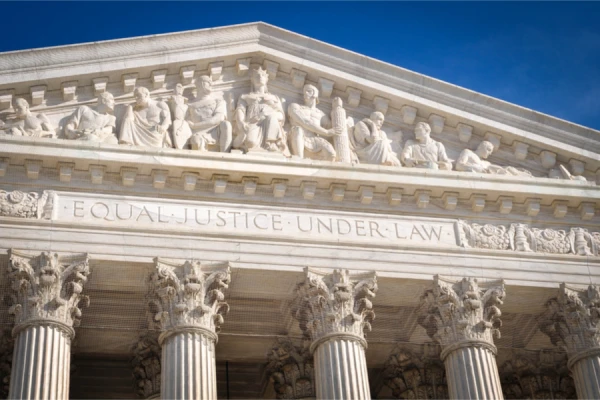
Washington D.C., Apr 1, 2019 / 09:30 am (CNA).- The Supreme Court issued a decision Monday denying the appeal of a Missouri death row inmate who argued that execution by lethal injection would constitute “cruel and unusual punishment” in his case.
The court rejected his appeal in a five-four decision issued April 1, which revived debate on the court about the legal limits on pain inmates can experience during executions.
Russell Bucklew was convicted of kidnapping, rape, and murder in 1996 and sentenced to death. He has not appealed either his conviction or his sentence. Instead, Bucklew contends that a rare medical condition, involving blood-filled tumors in his throat and neck, prevent him from being strapped down on his back, because he could begin to suffocate before a lethal injection could be administered.
Writing in the majority opinion, Justice Neil Gorsuch explained that a measure of pain and suffering was expected in executions and that the constitutional bar on “cruel and unusual punishment” did not entitle inmates to a pain-free death.
“When it comes to determining whether a punishment is unconstitutionally cruel because of the pain involved, the law has always asked whether the punishment superadds pain well beyond what’s needed to effectuate a death sentence,” Gorsuch wrote.
The court found that Bucklew offered no alternative means of execution that could be readily implemented by the state and which would offer a more reasonable chance of minimizing pain.
The court also held that he had failed to make a solid case he was at undue risk of pain beyond that which could be expected in the course of an execution.
“His contention that the State may use painful procedures to administer the lethal injection, including forcing him to lie flat on his back (which he claims could impair his breathing even before the pentobarbital is administered), rests on speculation unsupported, if not affirmatively contradicted, by the record.”
“The Eighth Amendment forbids ‘cruel and unusual’ methods of capital punishment but does not guarantee a prisoner a painless death.”
Justice Stephen Breyer wrote a dissenting opinion in which he questioned both the determination that Bucklew’s medical condition would not “superadd” excessive pain, and that he should be obliged to suggest a readily practical alternative for his own execution.
“Bucklew has easily established a genuine issue of material fact regarding whether an execution by lethal injection would subject him to impermissible suffering,” Breyer wrote.
During evidence, the court heard that each morning, Bucklew begins his day by wiping away the blood which had leaked out of his nose and mouth over night, such is his sensitivity to lying down.
“The evidence, taken in the light most favorable to Bucklew, creates a genuine factual issue as to whether Missouri’s lethal injection protocol would subject him to several minutes of severe pain and suffering.”
Breyer also argued that Bucklew’s condition was so unique that ruling lethal injection to be unconstitutional in his case, even without an alternative put forward, would not open the door to similar challenges from other inmates in Missouri.
Last year, Pope Francis revised the Catechism of the Catholic Church last week to say that the death penalty was now “inadmissible” and an “attack on the inviolability and dignity of the person” due in part to various improvements in modern prison systems and their ability to keep the public safe.
Since then, bishops in Florida, Tennessee and Washington have all supported an end to capital punishment in their states. Last month, the bishops of California welcomed a moratorium on the death penalty introduced by Gov. Gavin Newsom.
If you value the news and views Catholic World Report provides, please consider donating to support our efforts. Your contribution will help us continue to make CWR available to all readers worldwide for free, without a subscription. Thank you for your generosity!
Click here for more information on donating to CWR. Click here to sign up for our newsletter.




Leave a Reply